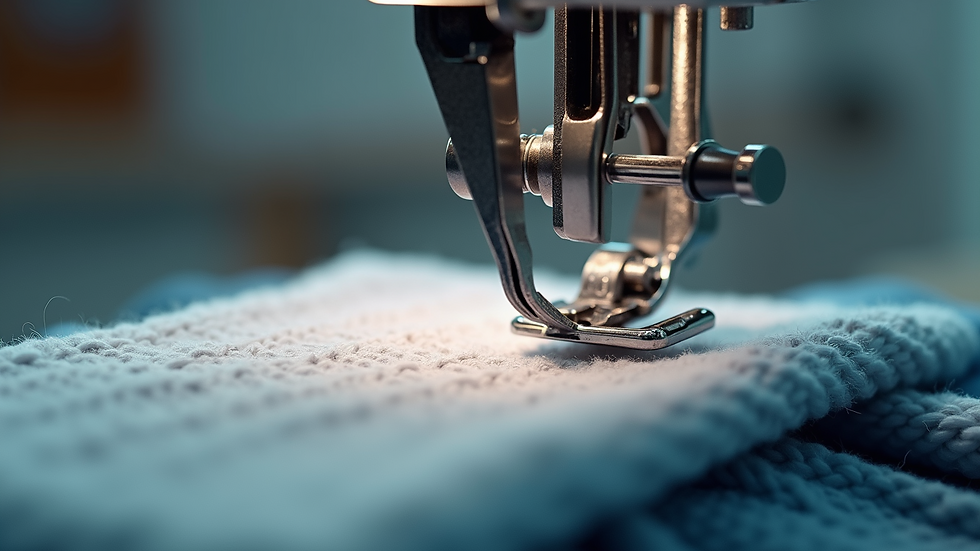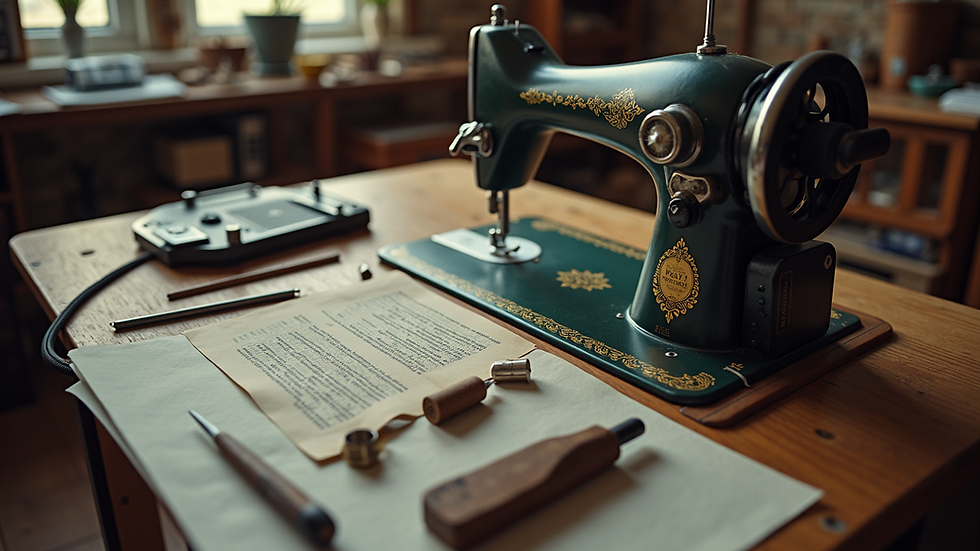Tips for Finding the Perfect Knitting Machine for Your Needs
- helenB-a
- Jul 28
- 4 min read
Knitting machines have revolutionised the way knitters create fabric, offering speed and precision that hand knitting cannot match. Whether you are a hobbyist looking to expand your craft or a professional aiming to increase production, choosing the right knitting machine is essential. This guide will help you navigate the options and find the perfect knitting machine tailored to your needs.
Understanding Different Types of Knitting Machines
Before purchasing a knitting machine, it is important to understand the various types available. Each type serves different purposes and skill levels.
Flatbed Knitting Machines: These machines have a flat needle bed and are ideal for producing flat pieces of fabric such as scarves, blankets, and panels for garments. They are versatile and commonly used by both beginners and professionals.
Circular Knitting Machines: These machines knit in a continuous round, making them perfect for seamless tubes like socks, hats, and sleeves. They are faster but less flexible in terms of pattern variety.
Electronic Knitting Machines: Equipped with computer controls, these machines allow for complex patterns and designs with minimal manual intervention. They are suitable for advanced users and commercial production.
Manual Knitting Machines: These require hand operation and are generally more affordable. They are great for beginners or those who prefer a hands-on approach.
When choosing, consider what types of projects you want to create and your level of experience. For example, if you want to knit intricate patterns, an electronic machine might be the best choice. For simple, flat pieces, a manual flatbed machine could suffice.

Key Features to Look for in Knitting Machines
Selecting the right knitting machine involves evaluating several important features. Here are some key aspects to consider:
Gauge: This refers to the number of needles per inch on the machine. A fine gauge (higher needles per inch) is suitable for lightweight yarns and delicate fabrics, while a coarse gauge works better with thicker yarns.
Needle Type and Quality: Durable needles that are easy to replace will save you time and frustration. Check if the machine uses latch needles, spring needles, or other types.
Pattern Capabilities: Some machines come with built-in pattern cards or electronic patterning options. If you want to create complex designs, look for machines with advanced patterning features.
Size and Portability: Consider where you will use the machine. If space is limited or you plan to travel with it, a compact and lightweight model is preferable.
Accessories and Support: Machines that come with comprehensive accessories like yarn feeders, tensioners, and instruction manuals can enhance your knitting experience. Also, check if the manufacturer or seller offers good customer support.
If you are on a budget, exploring used knitting machines can be a smart way to get a quality machine at a lower price.

Why Did They Stop Making Knitting Machines?
The decline in knitting machine production is a topic that often puzzles enthusiasts. Several factors contributed to this trend:
Shift in Fashion and Textile Industry: The rise of fast fashion and mass-produced textiles reduced the demand for hand-crafted or machine-knit fabrics. Large-scale industrial knitting machines replaced smaller home-use models.
Technological Advancements: Newer technologies like 3D knitting and automated textile manufacturing made traditional knitting machines less relevant in commercial settings.
Market Changes: The cost of manufacturing and maintaining knitting machines increased, while consumer interest shifted towards other hobbies and crafts.
Availability of Alternatives: The popularity of hand knitting and crochet, along with the rise of digital crafting tools, led to a decline in knitting machine sales.
Despite this, there remains a dedicated community of knitters who value the unique capabilities of knitting machines. This has kept the market for used and vintage machines alive, supported by specialised sellers and repair services.

Tips for Buying Your First Knitting Machine
If you are new to knitting machines, here are some practical tips to help you make a confident purchase:
Research Thoroughly: Read reviews, watch tutorial videos, and join knitting forums to learn about different brands and models.
Set a Budget: Decide how much you are willing to spend. Remember to factor in the cost of accessories and maintenance.
Test Before Buying: If possible, try out the machine in person or watch demonstrations to understand its operation.
Consider Second-Hand Options: Buying used knitting machines can be cost-effective, but ensure the machine is in good working condition.
Check for Spare Parts: Make sure replacement needles and parts are readily available.
Start Simple: Choose a machine that matches your skill level and project goals. You can always upgrade later.
By following these steps, you can avoid common pitfalls and find a machine that will serve you well for years.
Maintaining Your Knitting Machine for Longevity
Once you have your knitting machine, proper maintenance is key to keeping it in top condition. Here are some essential maintenance tips:
Regular Cleaning: Remove lint, dust, and yarn fibres from the needle bed and moving parts after each use.
Lubrication: Apply machine oil to the recommended areas to ensure smooth operation.
Needle Care: Inspect needles regularly for damage and replace any bent or broken ones immediately.
Storage: Store your machine in a dry, dust-free environment to prevent rust and damage.
Professional Servicing: Consider having your machine serviced by a professional annually or if you notice performance issues.
Good maintenance not only extends the life of your machine but also improves the quality of your knitting projects.
Finding the perfect knitting machine is a rewarding journey that combines research, hands-on experience, and understanding your creative needs. Whether you opt for a brand-new model or explore the world of used knitting machines, the right machine will open up new possibilities for your knitting projects. Take your time, ask questions, and enjoy the process of discovering the ideal tool to bring your knitting ideas to life.




Comments